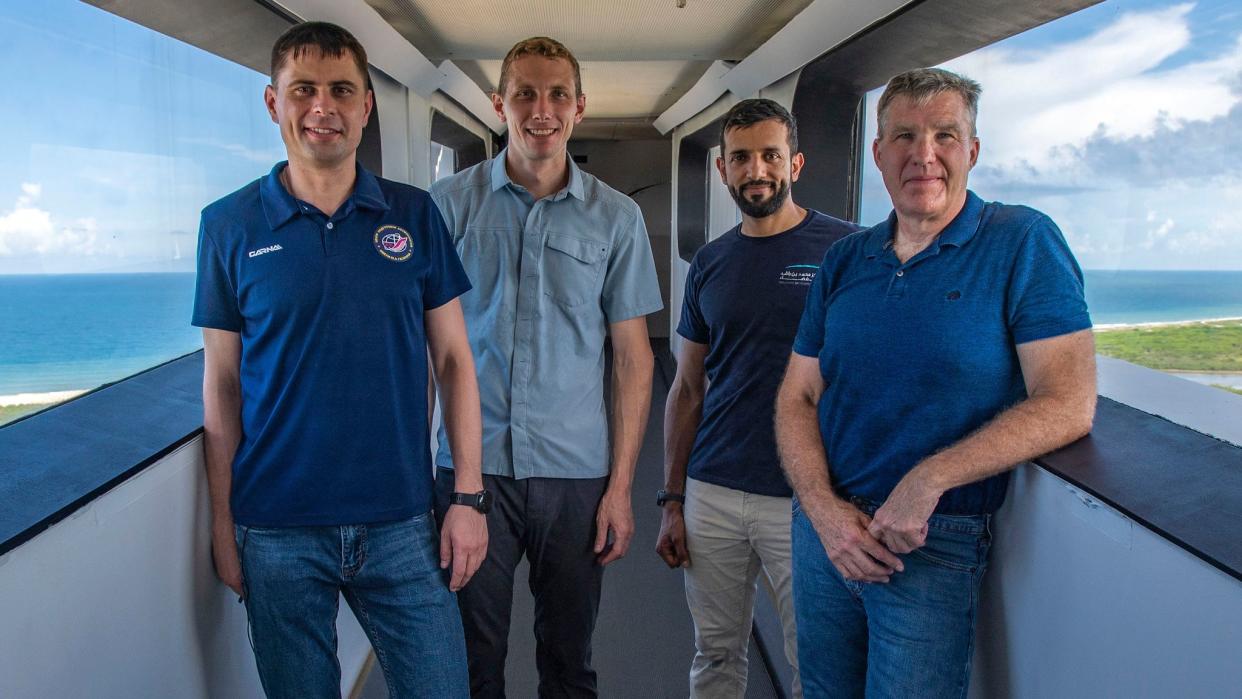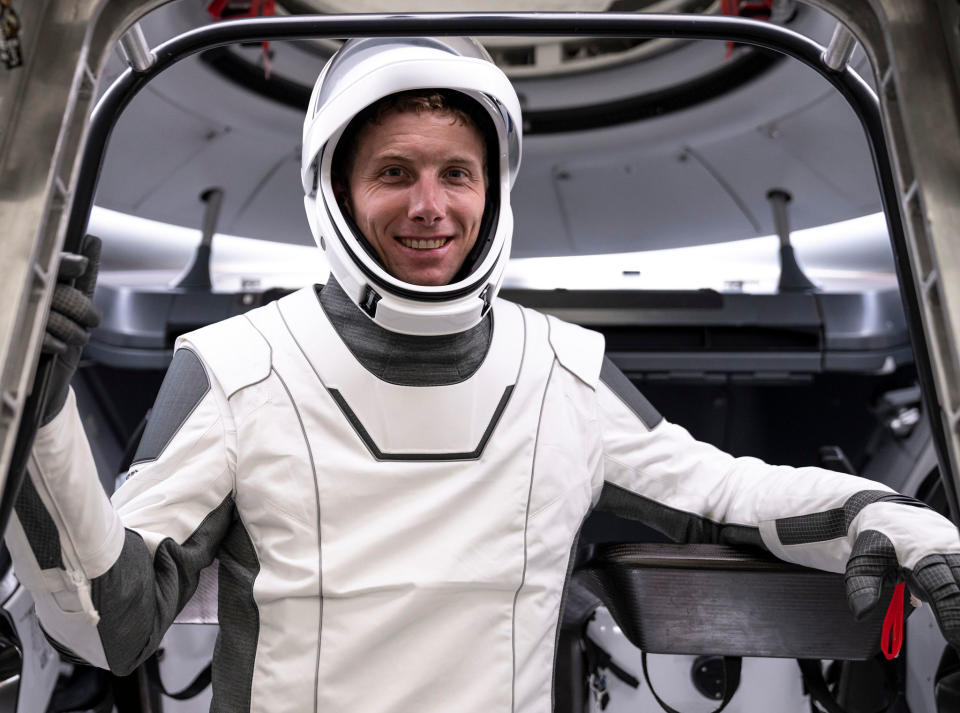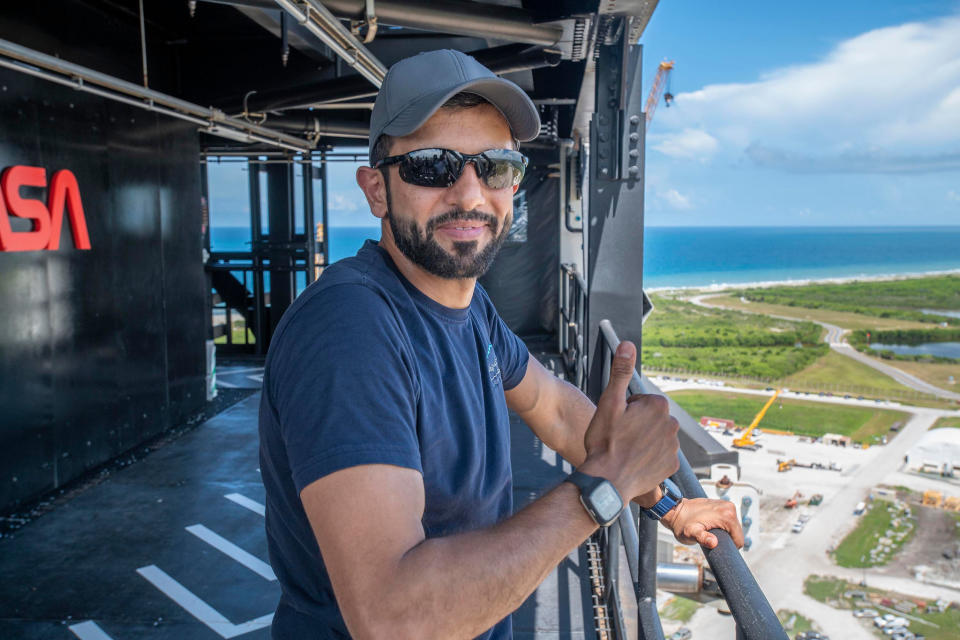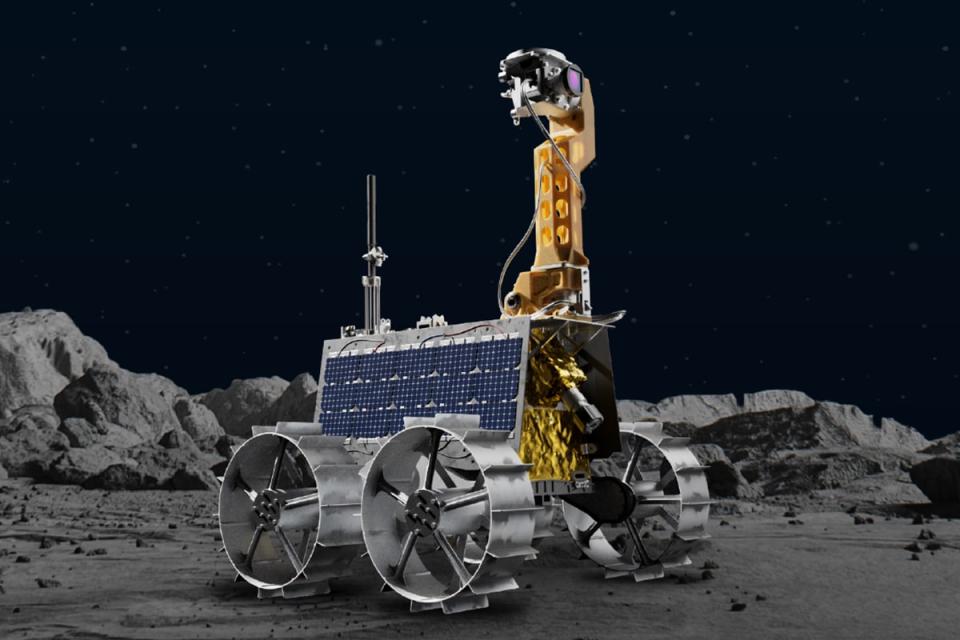SpaceX Crew-6 astronauts gear up for Feb. 26 launch to space station

- Oops!Something went wrong.Please try again later.
Only two months after NASA's last major moon mission splashed down, the agency is gearing up for the next one.
The Artemis 1 mission took three mannequins and a host of research to lunar orbit and back in the human-rated Orion capsule. Artemis 2 will send four crew members around the moon in 2024. Who will fly it will likely be announced this spring.
The next astronaut mission to the International Space Station (ISS), SpaceX's four-person Crew-6 flight, will help NASA gear up for such crewed moon trips, among other goals. Crew-6, which is scheduled to launch atop a Falcon 9 rocket no earlier than Feb. 26, will conduct research designed to advance future long-duration living off Earth, several of its crewmembers told Space.com.
Related: NASA's Artemis 1 moon mission was epic and you can relive it in this highlight video
"The space station is a proving ground for Artemis," Crew-6 pilot Warren "Woody" Hoburg, a rookie NASA astronaut, told Space.com in a small-group Zoom interview from NASA's Johnson Space Center in Houston.
The ISS, he noted, has hosted tests of all sorts of tech since long-duration astronaut stays there started 22 years ago; recycling urine into water is a famous example he cited. But the station's Expedition 69, which will begin just after Crew-6's arrival, will have several experiments directly relating to moon research.
Moon-related investigations include a microscope that may work on the lunar surface, a study of space station microbes that could help keep astronauts healthy on the moon, and an experimental high-speed communications system, according to NASA documentation.
Hoburg also said the ISS allows crews to test hobbies that help them stay content and mentally fit during their time away from Earth — a big priority for long-term mission planning. He plans to play chess during the upcoming mission, although exactly how to do so in microgravity will be worked out.
"I'm not good, but I really enjoy the game, and when I have some downtime and just need to focus on something else, I often open my phone and play a game of chess," Hoburg said. Once the logistics are worked out, perhaps via a computer game, he plans friendly competitions with friends and family on Earth and hopes to improve his game while in space.

Crew-6 commander Stephen Bowen, who flew three space shuttle missions between 2008 and 2011 before joining Crew-6, told Space.com he is not sure if he can convince his family to let him take a fifth flight on a future Artemis program mission. But the NASA astronaut will have a discussion about that possibility after getting home later this year.
Bowen's past experience as a submariner would be helpful on long-duration missions in Earth orbit or on the moon, although he said there are key differences to serving under water.
"I'll have a lot more communication, obviously, than I ever had on a submarine, which will be nice. But I think it would be wrong to try and run the household from space, so I wouldn't even try and do that," he said.

Also on board Crew-6 are two astronauts whose access to Artemis missions is a little more uncertain. That said, in 2020 the United Arab Emirates (UAE) signed the Artemis Accords, a NASA-led international framework for peaceful exploration now targeting the moon. And one of the UAE's astronauts is just about to take flight with Crew-6.
Sultan Al Neyadi is the first UAE astronaut in the young program to accept a long-duration mission, following the historic debut eight-day mission by Hazza Al Mansoori in 2019. (Al Neyadi got his Crew-6 seat via a series of astronaut seat swaps among participating ISS nations.)
Al Neyadi left the door open to a possible Emirati crewed moon mission at some point. "I think that's the logical path," he told Space.com, and noted that UAE hardware is en route right now to the moon: that would be the Rashid rover, on board a private Japanese lunar lander that is expected to touch down sometime this spring.
As for whether a crew member could follow Rashid to the moon, "it's a matter of actively being partner of future projects," Al Neyadi added.

The other Crew-6 astronaut is rookie Russian spaceflyer Andrey Fedyaev. His country is not a signatory to the Artemis Accords and is charting its own path in space exploration. Russia is planning a new independent space station in the wake of its invasion of Ukraine nearly a year ago and is partnering on a planned moon base with China.
Science continues on the Russian side of the ISS, however, and may be of benefit to all long-duration crews no matter their destination. Speaking through an interpreter, Fedyaev said Russia's ongoing ISS experiments include smelting and crystal growth, which could help advance in-situ manufacturing on the moon or beyond.
The ISS Nauka module arrived to expand Russian science in 2021, creating a brief problem in station operations after the new arrival tilted the station via an unplanned thruster firing. All was recovered quickly, however, allowing Russia to prioritize readying it for operations. Of its science, Fedyaev added in the short interview, "we're excited about that. We have some new capabilities."
Elizabeth Howell is the co-author of "Why Am I Taller?" (ECW Press, 2022; with Canadian astronaut Dave Williams), a book about space medicine. Follow her on Twitter @howellspace. Follow us on Twitter @Spacedotcom or Facebook.

